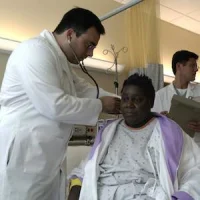Leaders at Intermountain Healthcare (Salt Lake City, Utah) discussed their organisation's efforts in population health hotspotting during a recent HealthLeaders Media LIVE event. Intermountain has made a concerted effort — from use of analytics to clinical redesign — to improve patient care and reduce high utilisation.
In 2011, a New Yorker article featured the work of Dr. Jeffrey Brenner, a family physician in Camden, New Jersey, who found that just one percent of patients in the community accounted for 30 percent of healthcare costs. This caught the attention of Intermountain executives and they became curious to know whether their patient population was any different.
Intermountain Healthcare is a not-for-profit system of 22 hospitals, a Medical Group with more than 185 physician clinics, and an affiliated health insurance company, SelectHealth. The group has more than 35,000 employees serving patients and plan members in Utah and southeastern Idaho.
Data analysis revealed that, between 2008 and 2012, Intermountain's top five percent of high-cost, high-utilising patients consumed 51 percent of healthcare costs. Notably, the top one percent — the true hotspotters — accounted for a starkly disproportionate share: 24 percent of total healthcare costs. Data on this high-utilising group also showed that:
Company officials found that "a lack of care coordination" was the most critical flaw in the system.
"Based on available data, we estimated that 50 percent had a primary care provider," says Scott Pingree, director of strategic planning at Intermountain. "We also found that on average they had 12 attending physicians. So that tells you something about how their care was not coordinated as it could be."
Drilling into the data further, the officials discovered that, within that small patient group (top one percent), almost $11 million — or more than one-quarter of the annual cost — was for renal failure. When Intermountain surveyed these patients, it found that this small group had the same negative trends in terms of care coordination.
"They didn't just have kidney failure requiring dialysis. They had multiple other comorbidities," notes Kim Henrichsen, RN, MSN, vice president of clinical operations and chief nursing officer. "The reality was most were being cared for by multiple specialists; they didn't have a primary care physician to oversee their care."
As an integrated delivery system, Intermountain has multiple, coordinated efforts towards clinical redesign, and the structural oversight to improve the care of hotspotters. The structure includes two oversight committees:
A "hotspotting" analytics committee. These analysts continually investigate how the hotspotters are being served, including reviewing their health conditions and their interaction with the medical team. They also measure the effectiveness of coordination.
An executive committee. Composed of leaders from the health system, medical group, health plan and other specific operational areas, this committee provides leadership and direction to hotspotting efforts.
Source: HealthLeaders Media
Image credit: Google Images
In 2011, a New Yorker article featured the work of Dr. Jeffrey Brenner, a family physician in Camden, New Jersey, who found that just one percent of patients in the community accounted for 30 percent of healthcare costs. This caught the attention of Intermountain executives and they became curious to know whether their patient population was any different.
Intermountain Healthcare is a not-for-profit system of 22 hospitals, a Medical Group with more than 185 physician clinics, and an affiliated health insurance company, SelectHealth. The group has more than 35,000 employees serving patients and plan members in Utah and southeastern Idaho.
Data analysis revealed that, between 2008 and 2012, Intermountain's top five percent of high-cost, high-utilising patients consumed 51 percent of healthcare costs. Notably, the top one percent — the true hotspotters — accounted for a starkly disproportionate share: 24 percent of total healthcare costs. Data on this high-utilising group also showed that:
- 77 percent had at least one of these chronic conditions: cardiovascular disease, lung disease, renal disease, mental illness, diabetes, cancer, stroke, or paralysis;
- 46 percent had two or more of those conditions; and
- 23 percent had three or more of those conditions.
Company officials found that "a lack of care coordination" was the most critical flaw in the system.
"Based on available data, we estimated that 50 percent had a primary care provider," says Scott Pingree, director of strategic planning at Intermountain. "We also found that on average they had 12 attending physicians. So that tells you something about how their care was not coordinated as it could be."
Drilling into the data further, the officials discovered that, within that small patient group (top one percent), almost $11 million — or more than one-quarter of the annual cost — was for renal failure. When Intermountain surveyed these patients, it found that this small group had the same negative trends in terms of care coordination.
"They didn't just have kidney failure requiring dialysis. They had multiple other comorbidities," notes Kim Henrichsen, RN, MSN, vice president of clinical operations and chief nursing officer. "The reality was most were being cared for by multiple specialists; they didn't have a primary care physician to oversee their care."
As an integrated delivery system, Intermountain has multiple, coordinated efforts towards clinical redesign, and the structural oversight to improve the care of hotspotters. The structure includes two oversight committees:
A "hotspotting" analytics committee. These analysts continually investigate how the hotspotters are being served, including reviewing their health conditions and their interaction with the medical team. They also measure the effectiveness of coordination.
An executive committee. Composed of leaders from the health system, medical group, health plan and other specific operational areas, this committee provides leadership and direction to hotspotting efforts.
Source: HealthLeaders Media
Image credit: Google Images
Latest Articles
healthmanagement, hotspotting, hotspotters, patient care, high utilisation, Intermountain Healthcare
Leaders at Intermountain Healthcare (Salt Lake City, Utah) discussed their organisation's efforts in population health hotspotting during a recent HealthLeaders Media LIVE event.


![Tuberculosis Diagnostics: The Promise of [18F]FDT PET Imaging Tuberculosis Diagnostics: The Promise of [18F]FDT PET Imaging](https://res.cloudinary.com/healthmanagement-org/image/upload/c_thumb,f_auto,fl_lossy,h_184,q_90,w_500/v1721132076/cw/00127782_cw_image_wi_88cc5f34b1423cec414436d2748b40ce.webp)







